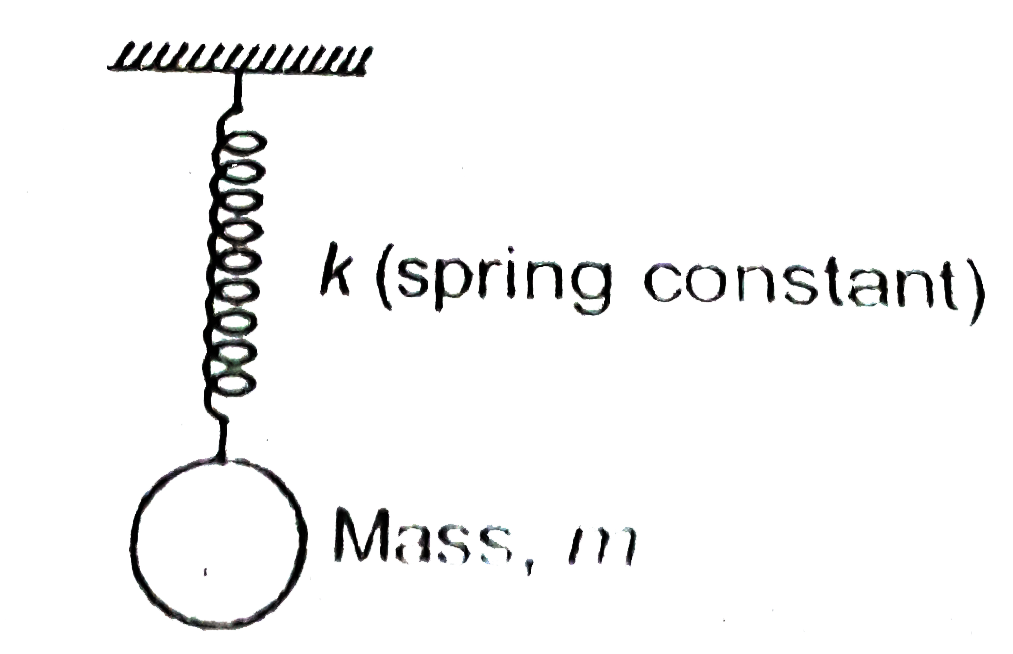A body stands on a weighing machine inside a lift. When the lift is going down wit acceleration g/4, the machine shows a reading 30 kg. When the lift goes upwards with acceleration g/4, the reading would be
18 k
37.5 kg
50 kg
67.5 kg
The correct Answer is:C
To solve the problem, we need to analyze the forces acting on the body when the lift is accelerating downwards and upwards.
1. Understanding the Situation:
- The body is standing on a weighing machine inside a lift.
- When the lift accelerates downwards with an acceleration of g4, the weighing machine shows a reading of 30 kg.
2. Calculating the Weight Reading:
- The reading on the weighing machine (normal force N) when the lift is going down can be expressed as:
N=mg−ma
- Here, a=g4. Therefore, substituting a:
N=mg−m(g4)=mg−mg4=mg(1−14)=mg(34)
- Given that the reading is 30 kg, we convert this to Newtons (using g≈10m/s2):
N=30×10=300N
- Thus, we have:
mg(34)=300⇒mg=300×43=400N
3. Finding the Mass:
- The mass m can be calculated as:
m=mgg=40010=40kg
4. Calculating the Reading When the Lift Goes Up:
- Now, when the lift accelerates upwards with the same acceleration g4, the normal force N′ can be expressed as:
N′=mg+ma
- Substituting a=g4:
N′=mg+m(g4)=mg+mg4=mg(1+14)=mg(54)
- We already found mg=400N. Therefore:
N′=400×54=500N
5. Converting the Normal Force Back to kg:
- Finally, to find the reading on the weighing machine in kg:
Reading in kg=N′g=50010=50kg
Final Answer:
The reading on the weighing machine when the lift goes upwards with an acceleration of g4 will be 50 kg.
- The body is standing on a weighing machine inside a lift.
- When the lift accelerates downwards with an acceleration of g4, the weighing machine shows a reading of 30 kg.
- The reading on the weighing machine (normal force N) when the lift is going down can be expressed as:
N=mg−ma
- Here, a=g4. Therefore, substituting a:
N=mg−m(g4)=mg−mg4=mg(1−14)=mg(34)
- Given that the reading is 30 kg, we convert this to Newtons (using g≈10m/s2):
N=30×10=300N
- Thus, we have:
mg(34)=300⇒mg=300×43=400N
- The mass m can be calculated as:
m=mgg=40010=40kg
- Now, when the lift accelerates upwards with the same acceleration g4, the normal force N′ can be expressed as:
N′=mg+ma
- Substituting a=g4:
N′=mg+m(g4)=mg+mg4=mg(1+14)=mg(54)
- We already found mg=400N. Therefore:
N′=400×54=500N
- Finally, to find the reading on the weighing machine in kg:
Reading in kg=N′g=50010=50kg
The reading on the weighing machine when the lift goes upwards with an acceleration of g4 will be 50 kg.
Topper's Solved these Questions
Similar Questions
A body of 100 kg stands on a spring weighing machine inside a lift. The lift starts to ascend with acceleration of 2.2ms−2. What is the reading of the machine inside a lift. The lift starts to ascend with acceleration of 2.2ms−2. What is the reading of the machine?
View SolutionA man of mass 75kg stands on a weighing machine in a lift which is moving upwards with uniform acceleration 1.2ms−2,find the reading of weighing machine.
View Solution
Knowledge Check
A man stands on a weighing machine kept inside a lift. Initially the lift is ascending with the acceleration 'a' due to which the reading is W. Now the lift decends with the same acceleration and reading 10% of initial. Find the acceleration of lift ?
Ag19m/sec2B9g11m/sec2C0m/sec2Dgm/sec2A man is standing on a weighing machine placed in a lift. When stationary his weight is recorded as 40 kg . If the lift is accelerated upwards with an acceleration of 2m/s2 , then the weight recorded in the machine will be (g=10m/s2)
A32 kgB40 kgC42 kgD48 kgA man of mass 70 kg stands on a weighing scale in a lift which is moving downward with the uniform acceleration of 5ms2 . The reading on the weighing scale is
A70 kgB35 kgC105 kgD700 kg
A body of 2 kg is suspended on a spring balance hung vertically in a lift . If the lift is falling downward under acceleration due to gravity g then what will be the reading of the balance ? If going upward with the same acceleration then ?
View SolutionTime period of a spring pendulum when lift moves downward with constant velocity v is T second. When the lift moves upward with constant acceleration=g3 , the time period will be

View SolutionA person is standing on a weighing machine placed near a door. What would be the effect on the reading of the machine if a person presses the edge of the door upward?
View SolutionThe weight of a man standing on a weighing machine in a lift is noted when (i) the lift is moving with a uniform velocity and (ii) the lift is moving down with an acceleration a. The ratio of the two weights is 43. What is the value of a
View SolutionA sonometer is set on the floor of a lift. When the lift is at rest, the sonometer wire vibrates with fundamental frequency 256 Hz. When the lift goes up with acceleration a =9g16 , the frequency of vibration of the same wire changes to
View Solution
